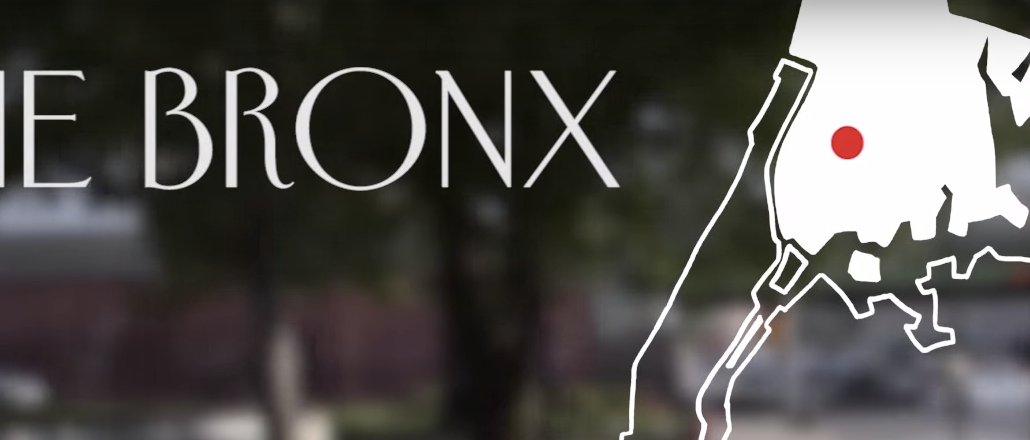
In the past year, The New Yorker has grown its internal video team from two to four employees, most recently with the addition of Cath Spangler from The New York Times as its new senior editor of video. It’s also producing a lot more content, rolling out at least one new video per day.
The Condé Nast title is growing its video business — but a lot of work still remains.
Sixteen months ago, Web video was “a whole new medium” for The New Yorker, but it was something it was “working hard on,” according to NewYorker.com editor Nicholas Thompson at the time.
“In the last year, we have advanced tremendously, but we are still fairly early on in our growth,” Thompson told Digiday this week.
The content varies in terms of format, but the focus remains the same: New York. There are scripted short films and documentaries either produced by The New Yorker (such as this one from filmmaker Riley Hooper that follows two men who are trying to walk every block in New York City) or acquired from the festival circuit through its partnership with sister company Condé Nast Entertainment. NewYorker.com also offers recurring series like “The Cartoon Lounge” and “Comma Queen,” starring in-house talent like cartoon editor Bob Mankoff and copy editor Mary Norris.
What The New Yorker is doing less of is simply using video to “enhance” existing print stories. “A year ago or two years ago when I started, it was almost all tied to print content,” said Thompson. “That’s still useful and valuable, but it’s not that valuable. We’re much more about original ideas and original series.”
Videos still might appear alongside written stories, but that’s because The New Yorker has discovered it does a good job of keeping people on the site longer. “Two months ago, we started embedding videos at the bottom of some blog posts and features,” said Thompson. “If you embed a video at the bottom, users are more likely to stay on the site than if they saw only text links.”
Distribution, however, is a complex puzzle for The New Yorker. Thompson and his team control video on NewYorker.com and social channels like Facebook and Snapchat. On Facebook, they are distributing “snippets” of full episodes in order to drive viewers back to the original on the site. On Snapchat, it’s all about fresh content. For instance, one Snapchat series features New Yorker art editor Françoise Mouly discussing that week’s New Yorker cover. Another follows film critic Richard Brody as he gives “capsule” movie reviews around the office.
But New Yorker videos can also be found on The Scene (a video portal owned by CNE), YouTube, AOL and a slew of other platforms CNE has syndication arrangements with. CNE also produces videos for The New Yorker (with input from The New Yorker editorial team) for both NewYorker.com and external platforms. For instance, it’s behind “The New Yorker Presents,” a half-hour series currently in production for Amazon.
All of this makes it difficult to assess how well The New Yorker’s video business is doing. CNE does not break out how individual channels and videos are faring across its distribution network, but all of its digital channels and The Scene combined to reach 9.8 million desktop uniques in the U.S. in June. Meanwhile, The New Yorker said video views are up 294 percent year to date on its website alone, and video ad revenue is up 420 percent. Meanwhile, comScore pegs the site’s video reach as being too small to measure.
It demonstrates that video is still a new game for The New Yorker. Six months ago, Thompson wasn’t thinking about video every day; now he is, even if it’s still a “relatively small percent” compared to the 15 or so posts he oversees every day.
One thing The New Yorker has in its corner: reach. According to comScore, NewYorker.com had 9.8 million U.S. uniques across platforms in June 2014, more than double the 4.6 million it reached a year prior. On Facebook, the magazine has nearly 2.4 million fans; on Twitter, that number rises to nearly 5.4 million followers. That’s a lot of potential viewers.
But there are pitfalls here, too. “It’s difficult for anybody to break through the clutter in the digital video world today,” said David Lang, chief content officer at Mindshare North America. “It makes it easier, if you have a well-known brand, for people to sample your content — but it does not guarantee they will become a loyal follower. They still have to meet the consumer’s expectation on what it means to be a New Yorker video.”
The New Yorker is approaching this dilemma by having the editorial team involved in the content — from decisions on what gets made to even appearing in the programming.
It also has more money to play with. Thompson won’t give specifics but said the annual budget for video this year is “significantly more than last year” and expects next year’s to be even higher. “Video is going to be an important part of how we tell stories and present information, so let’s get going on this,” he said.
More in Media

Digiday+ Research: Publishers’ growing focus on video doesn’t translate to social platforms
Major publishers have made recent investments in vertical video, but that shift is not carrying over to social media platforms.

Technology x humanity: A conversation with Dayforce’s Amy Capellanti-Wolf
Capellanti-Wolf shared insight on everything from navigating AI adoption and combating burnout to rethinking talent strategies.

How The Arena Group is rewriting its commercial playbook for the zero-click era
The company is testing AI-powered content recommendation models to keep readers moving through its network of sites and, in doing so, bump up revenue per session – its core performance metric.





